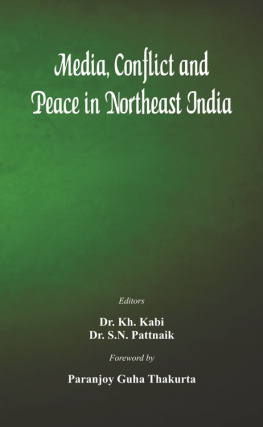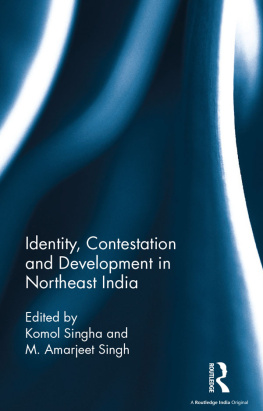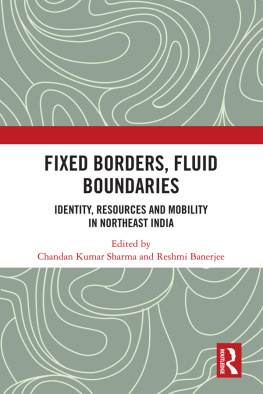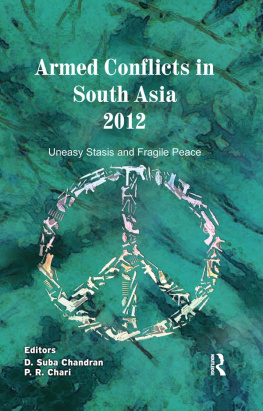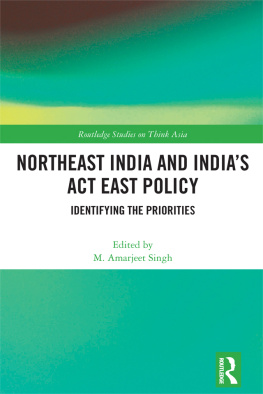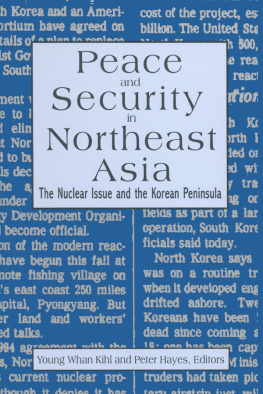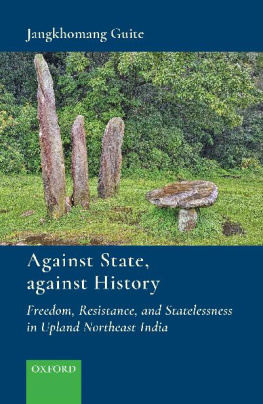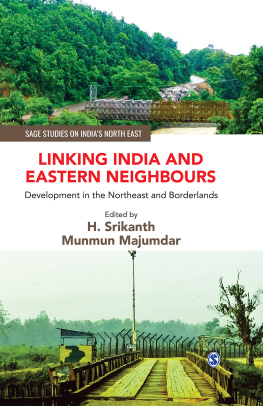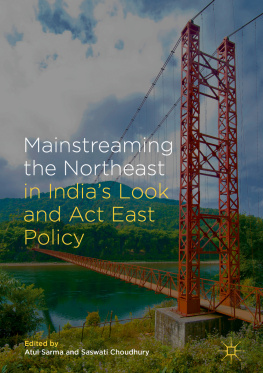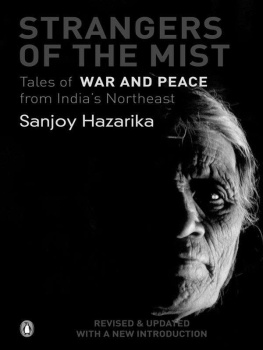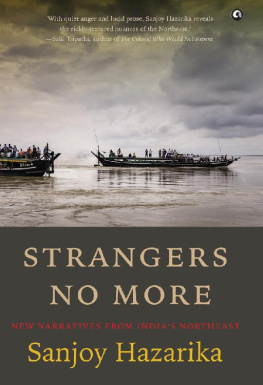Media, Conflict and Peace in
Northeast India
Media, Conflict and Peace in
Northeast India
Edited by
Dr. Kh. Kabi
Dr. S N. Pattnaik
Foreword by
Paranjoy Guha Thakurta
Vij Books India Pvt Ltd
New Delhi (India)
Published by
Vij Books India Pvt Ltd
(Publishers, Distributors & Importers) 2/19, Ansari Road
Delhi 110 002
Phones: 91-11-43596460, 91-11-47340674 Fax: 91-11-47340674
e-mail: vijbooks@rediffmail.com
Copyright 2015,
ISBN: 978-93-84464-75-2
All rights reserved.
No part of this book may be reproduced, stored in a retrieval system, transmitted or utilized in any form or by any means, electronic, mechanical, photocopying, recording or otherwise, without the prior permission of the copyright owner. Application for such permission should be addressed to the publisher.
The views expressed in the book are of the contributors/editors in their personal capacity.
Content
Foreword | vii |
Contributors | xi |
BERTIL LINTNER |
The Media and Ethnic Conflicts | |
HAROON HABIB |
Media, Peace and Conflict: Northeast India and Bangladesh | |
MONALISA CHANGKIJA |
Media as Facilitators of Peace | |
PRADIP PHANJOUBAM |
Media, Trauma Reporting and Conflict Resolution | |
SAMIR K PURKAYASTHA |
Medias Role in Enforcing Change in Northeast | |
TERESA REHMAN |
Reporting Northeast India | |
SAMUDRA GUPTA KASHYAP |
Media and Insurgency | |
RAJEEV BHATTACHARYYA |
Medias Role in Facilitating Peace in Conflict Situations in Assam | |
NIRENDRA DEV |
Entire World is not Outer Darkness: Need to Break Free | |
DARSHANA LIYANAGE |
Advertising and Ethnicities: A Comparative Study of Sri Lanka | |
and Northeast India |
Foreword
The northeastern part of India comprising the seven sisters or states of Assam, Arunachal Pradesh, Nagaland, Manipur, Meghalaya, Mizoram and Tripura, together with the eighth state of Sikkim, is separated from the rest of the country by a narrow chickens neck near Siliguri, in the northern part of West Bengala land corridor that is physically just 29 km wide. More than geographical separation, sections of people in the northeast have for long felt alienated from Indias political, social and economic mainstream.
The northeast has around four per cent of Indias population living in eight per cent of the countrys geographical area. This region is surrounded by four countries: Bangladesh, Bhutan, China and Myanmar. Ninety-six per cent of the borders of the northeastern region of India are international boundaries. A slew of questions relating to sub-nationalism, regional and ethnic identities, illegal immigration and violent separatist movements have dominated much of the discourse on the north-east, which is arguably one of the most heterogeneous parts of the world.
The longest lasting insurgency has been that of the Nagas who declared independence a day before India did, that is, on August 14, 1947. In 1963, Nagaland was the first of four states to be carved out of undivided Assam, but the demands for independence, autonomy, cease-fire and territorial expansion have continued in different forms. Negotiations have taken place between and among various central and state agencies of the Indian government and groups like the National Socialist Council of Nagaland (Isak-Muivah) or NSCN(I-M) and the NSCN (Khaplang). The main demand of the NSCN(I-M) is for a greater Nagaland, including the contiguous Naga majority districts in the neighbouring state of Manipur.
With the possible exception of the United Liberation Front of Asom (ULFA), which demands independence for Assam, the remaining groups demanding independence in Tripura and Manipur have done so intermittently in recent years. One of the major grievances of these groups relates to the failure of the Union government to protect the demographic and cultural integrity of ethnic groups from those considered legal as well as illegal migrants. A number of smaller groups represent particular minorities and demand greater separate statehood or greater autonomy through protection under the Sixth Schedule of the Constitution of India, of the kind granted to the Bodos in Assam. Among the seven sisters, Arunachal Pradesh andto a lesser extentMeghalaya have not had major long-standing insurgent movements seeking independence or greater autonomy, while Mizoram is the only state in the region which has been governed in a relatively stable manner by former insurgents and violence has almost completely abated in recent years.
At the time of Independence, the northeast was one of the most prosperous regions in the whole of India. Six and half decades later, this area has become one of the most troubled and backward regions in the country. In 1947, undivided Assam had the second highest per capita income among all states in India. After the 1965 India-Pakistan war, transit facilities between the north-east and West Bengal through Bangladesh (then East Pakistan) were denied. Subsequently, the northeastern part of India started witnessing problems associated with land-locked regions. Before 1947, the distance between Guwahati and Kolkata would be less than 600 km against 1,300 km at present; the distance between Agartala and Kolkata would be 350 km against 2,000 km now.
In many parts of the north-east, over-dependence on funds from the Union government has incubated powerful and corrupt elites. Until local groups with the help of the media address the issue of corruption by exerting pressure from below to ensure greater transparency on the part of politicians and officials, the future development of the region will be severely constrained. However, it is also true that economic considerations do not fully explain the myriad problems of the peoples of this part of the planet. Despite huge financial programmes that have been formulated and expendedthere is a separate ministry in the government of India
called the Ministry for Development of the North-Eastern Region (or DONER)identity issues stemming from ethnic, linguistic, religious and cultural differences have sometimes proved more difficult to resolve and become intractable.
The northeast is certainly not all about violence and insurgency. The area has traditions of community-based economic and social organizations and an amazingly rich cultural repertoire. Nagalands experience of communitization is acknowledged as an exemplar for the country. The northeast depends heavily on agriculture. There is considerable potential for horticulture, floriculture and cultivation of medicinal plants. Besides traditional crops like tea, there is scope for developing plantations for bamboo, rubber, spices and fruits. The northeast has amazing forest wealth, bio-diversity and genetic resources. Arunachal Pradesh is considered to be one of the worlds most important ecological hotspots.
Yet, Mother Nature also causes many problems. Controlling the impact that floods cause is a major task, especially in Assam. Large dams have become increasingly unfeasible for social, environmental and technical reasons and there is need to focus on small and medium irrigation projects. Yet, under pressure from powerful lobbies of contractors with support from their political mentors, a number of major hydro-electric projects have been envisaged that have the potential of disrupting the fragile ecology of the region. Information technology and education have huge possibilities for generating productive employment in the region. But, implementation of plans and projects remains painfully slow.

